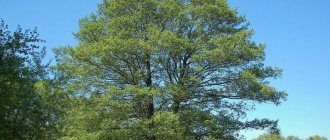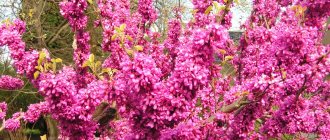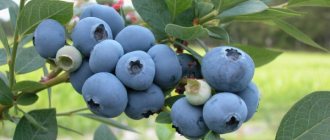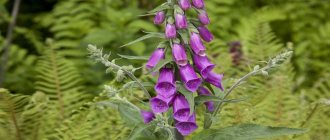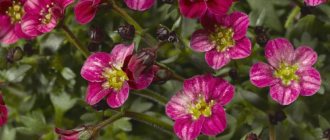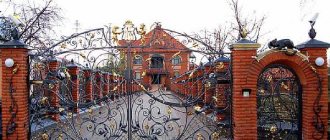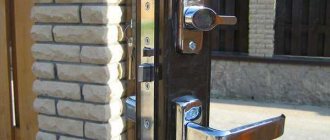Nettle, Latin name "urtica", which belongs to the genus nettles, the peculiarity of which is stinging. In Russian meaning it comes from the Old Slavonic word “to drip” - which means “boiling water”. Its height is approximately 60 - 150 cm. If it comes into contact with the skin, you will get a rather painful burn, which is the plant’s way of protecting itself from being eaten by herbivores.
It has long been known about its healing qualities, which today are widely used in such areas as cosmetology, herbal medicine, gynecology, and pharmacology.
Nettle has a huge range of healing properties that have a positive effect on the body; it can be seen in many folk and pharmaceutical remedies.
Nettle soup is very popular among people, and to make healthy tea, you just need to pour boiling water over its leaves. Due to the presence of some contraindications, if used frequently, you should consult a specialist. Photos of nettles can be seen in our article.
Botanical description of stinging nettle
Perennial dioecious grass with a powerful root system developing horizontally. Depending on climatic conditions, it grows from 60 cm to 2 m in height. The name of stinging nettle in Latin is Urtica dioica. The specific name "dioicus" comes from the ancient Greek word meaning "two houses", the generic name comes from the Latin word "uro", that is, "burn".
The stems are erect, fibrous, hollow inside. The cross section is tetrahedral. Initially the escape is single. Over time, axillary stems develop. Stinging nettle is covered with stinging hairs.
Comment! Sometimes there are forms with “bare” leaf blades or with few and non-burning bristles.
The leaves of stinging nettle are equilateral, opposite, simple. The color is dark green. The tips of the leaf blades are pointed. The edges are coarsely serrated or coarsely toothed. The shape is oblong, ovoid-lanceolate or heart-shaped. Sometimes there is an elliptical one. The ratio of the length and width of the leaf blade is 2:1. The bases of the leaves have a deep, up to 5 mm, notch. The petioles are long.
Inflorescences are drooping panicles. Peduncles are located at the base of the petioles. The lowest inflorescences appear at a height of 7-14 nodes from the ground. Peduncles can also grow on axillary shoots. In dioecious plants, one specimen can have only male or female flowers. Because of this, half the stinging nettle population remains sterile.
Unlike male inflorescences, female inflorescences of stinging nettle have protection
The fruits are small elliptical nuts 1-1.4 mm long. The color is yellowish or light brown. The surface is matte.
Comment! One female plant produces up to 22 thousand seeds during the growing season.
The root system of stinging nettle is located horizontally and shallowly underground. Stolon-shaped roots grow by 35-40 cm per year.
Defense mechanism against herbivores
All aerial parts of stinging nettle are covered with thick, stinging hairs. The latter are one giant cell, similar to a medical ampoule and filled with silicon salts. The tip of the “ampule” protrudes beyond the plant. The walls of the protective cage are very fragile. They break even with slight impact. The sharp end of the hair pierces the skin, and the juice that fills the cell enters the herbivore’s body. Composition of the ampoule contents:
- formic acid;
- histamine;
- choline
These substances cause skin irritation and a burning sensation.
Comment! The stinging hairs are not effective against cattle.
Touching some tropical nettles can cause death
Where does stinging nettle grow?
The weed is very unpretentious and easily adapts to different climatic conditions. Distributed in the temperate climate zone of the northern and southern hemispheres. Humans brought the seeds to continents where they were not originally found. In this way, the plant penetrated into North America and Australia. In Eurasia, stinging nettle grows not only in Europe. It can be found in Asia Minor and Western Asia and in India. In North Africa, its range stretches from Libya to Morocco. Only available in South America.
Comment! In Nepal, stinging nettle climbs to an altitude of 3500-4000 m above sea level.
In Russia, it is distributed in Western Siberia and the European part. It was introduced to the Far East and Eastern Siberia. In natural conditions it prefers forest and forest-steppe zones.
Stinging nettle is a ruderal plant. That is, she prefers:
- forest felling;
- wet forests and meadows;
- ditches;
- ravines;
- garbage places near fences and homes;
- abandoned lands;
- shores of reservoirs.
Thanks to the ability for vegetative propagation, it forms “clean” thickets that do not have inclusions of foreign flora over large areas.
Comment! Stinging nettle and stinging nettle can serve as indicators of nitrogen-rich soils.
Stinging nettle does not have a conservation status. On the contrary, it is considered a difficult weed to eradicate. But it is easy to confuse it with another nettle: Kyiv. Both species have very similar:
- inflorescences;
- leaves;
- shoot height.
The Kyiv law actually protects in some regions:
- Voronezh and Lipetsk regions;
- Belarus;
- Hungary;
- Czech Republic.
But if you look closely, it is not difficult to distinguish a protected species from a malicious weed.
The main difference between Kyiv nettle and dioecious nettle is longer and narrower leaf blades
Is stinging nettle growing wild or not?
Stinging nettle was a cultivated plant until the 19th century, when it was grown for its fiber for the textile industry. Today gardeners are not happy about its appearance. If stinging nettle is given free rein, it will quickly fill all the space available to it. And it is very difficult to get rid of it.
But although stinging nettle has given way to cotton and synthetic fabrics, South Asian countries still use ramie/bomeria fibers, which are specially grown on an industrial scale. Asian grass belongs to the same family as stinging nettle, but it has a different genus and does not have the stinging hairs.
Bomerian fabrics are valued for their resemblance to natural silk
Is stinging nettle poisonous?
It depends on the point of view. The stinging bristles contain poison that affects the skin and mucous membranes. But as a plant used for food, stinging nettle is harmless. You just need to pour boiling water over it to avoid burns. The danger is consuming too many nettle leaves and seeds, due to their high content of vitamin K, which clots the blood.
How to distinguish stinging nettle from stinging nettle
When young, stinging nettle and stinging nettle look very similar. But in mature plants, details become noticeable, by which they are easy to distinguish from each other:
- difference in shoot height: stinging no more than 35 cm, dioecious - up to 2 m;
- the appearance of the inflorescence is spike-shaped in the stinging one, and a hanging panicle in the dioecious one;
- size of inflorescences: in dioecious the petioles are longer, in the pungent one they are shorter or equal.
Stinging, unlike dioecious, does not reproduce using the root system, therefore it forms only small clumps, without claiming all the available space.
The places of growth of stinging and dioecious are the same:
- vacant lots;
- vegetable gardens;
- roadsides;
- along the edges of compost pits;
- spaces near houses and fences.
The main condition for growth: nitrogen-rich soil.
Comment! Stinging nettle is inferior in nutritional and chemical characteristics to stinging nettle.
The pungent variety is used to treat urolithiasis and heal skin ulcers
Description of the plant
The stem of the plant has an elongated shape. The arrangement of leaf blades is opposite. The leaves are arranged crosswise. At the initial stage, the shoot lacks axillary buds from which shoots subsequently appear.
The length of the leaf plate in an adult plant is about 8–9 cm. The width is about 6–7 cm. The shape of the leaf has serrated elements. Stipules narrowly triangular or longitudinal.
The flowering process of the plant is observed from the beginning of May to the end of October. The burning mixture contains chemical compounds that, when touched, cause severe itching and burning.
Stinging nettle has a wide distribution. Quite often, it can be found in Europe, China and Russia. Scientists have noted the presence of nettles in the region of Morocco and Sudan. This plant prefers warm and temperate climates.Methods of propagation of stinging nettle
Stinging nettle reproduces using seeds and roots. The germination rate of nettle “nuts” is low. In addition, only female plants can produce fruits. This method is suitable for transferring future offspring over long distances. Seed germination may increase after passing through the gastrointestinal tract of cattle.
To conquer nearby spaces, the vegetative method is more effective, since male specimens can also produce clones. There are growth buds on the stolons, which are activated the next year. Thus, even a male plant can produce clones and take over the entire surrounding area.
Roots are the main method of propagation of stinging nettle.
Traditional treatment recipes
For dysentery (infusion) : mix nettle leaves and blackberry stems in equal quantities. Pour 2 teaspoons of the mixture into 1 glass of boiling water, leave in a thermos for 30-40 minutes. Drink 0.5 cups, 3 times a day
To cleanse the blood (decoction) : 4 tbsp. Pour 1 cup of hot water over spoons of stinging nettle leaves and simmer over low heat. Boil for 10-15 minutes, then leave to steep for half an hour. Take three tablespoons, three times a day, before meals
For rheumatism (juice) : fresh young nettle is best for effective treatment. It must be washed and doused with boiling water. Then finely chop and squeeze out the juice. Drink 1 tablespoon of the resulting juice before meals
The juice must be stored in a cool place for no more than 2 days.
For diabetes mellitus (powder) : 2 tbsp. spoons of dry powder from nettle leaves, stir in 1 glass of yogurt, yogurt or kefir and consume 1 time per day
For hemorrhoids (infusion) : mix 1 part nettle leaves, 2 parts oregano herb, 2 parts buckthorn bark. Then pour 1 tablespoon of the herbal mixture into 1.5 cups of water and boil for 5 minutes. Leave for 4 hours in a thermos. Take warm, 1/2 cup, 3 times a day, 15 minutes before meals.
When treating cough (syrup) : grind 100 grams of the plant root, add cold water and leave for 10 minutes. After which the water must be drained
Prepare sugar syrup: 3 tablespoons of sugar, add to 100 grams of water and boil over low heat. Pour the resulting syrup over the roots and cook for about five minutes over medium heat. Leave to infuse, then strain and drink 1 tablespoon three times a day, before each meal.
For anemia and vitamin deficiency (infusion) : pour 2 tablespoons of dry leaves with 1 glass (200 ml) of boiling water and leave for 20 minutes. Be sure to strain the infusion. Drink it three times a day, 1/2 cup. If the taste seems bitter, you can add 1 teaspoon of honey. Course of treatment 1 month
For allergic diseases (infusion) : 2 tablespoons of crushed nettle leaves (you can use either fresh or dried) pour 2 cups of boiling water, leave for 2 hours, strain. Take 4 times a day, before meals, 0.5 cups
For allergic skin rashes in children:
Scald fresh stinging nettle herb with boiling water and cool. Wipe the externally affected areas of the skin with the herb 1-2 times a day until complete recovery. The procedure helps relieve itching and inflammation
Nettle tea: 1 tablespoon of dried stinging nettle leaves is poured into one glass of boiling water (200 ml), infused for 1 hour, then filtered and drunk within 30 minutes. before meals
Features of cultivation
There are none, since no one grows weed specifically. But if you want to completely destroy your summer cottage, then you can make a well-manured garden bed. It is better to mix the soil with humus in a 1:1 ratio. After this, pour out the seeds and lightly dust them with soil. There is no need to dig deep. The soil is kept slightly moist. The illumination of the bed does not matter. Given sufficient water and nutrients, stinging nettle grows well in both shade and sun.
How to use in everyday life
- Cheviot is made from nettle, a light, warm fabric reminiscent of linen or cotton.
- The fabric, which is an excellent alternative to silk, is made from Chinese nettle.
- Nettle infusion is popular among flower growers and is used to combat aphids.
- Nettle is used to make bath brooms.
- Nettle is added as a dye to color food yellow or green.
- Particularly popular is nettle fertilizer, which increases soil fertility.
Chemical composition of stinging nettle
Young shoots of stinging nettle contain:
- fiber – 37%;
- crude protein – 23%;
- ash – 18%;
- fats – 3%.
The most valuable part of stinging nettle is its leaves. 100 g contain:
- 100-270 mg of ascorbic acid;
- 14-50 mg provitamin A;
- 41 mg iron;
- 8.2 mg manganese;
- 4.3 mg boron;
- 2.7 mg titanium;
- 0.03 mg nickel.
1 g of leaves contains 400 IU of vitamin K. The large discrepancy in data on vitamins C and A is due to the very large area of the plant. Samples for the study were collected in places with different soil compositions.
In addition to vitamins and microelements, the leaves contain:
- chlorophyll up to 8%;
- tannins;
- sugar;
- organic acids;
- sitosterol;
- phytoncides;
- porphyrins;
- glycoside urticin;
- phenolic acids.
The rich chemical composition allows the herb to be used as a remedy in folk medicine. It is believed to help against many diseases, including colds.
Comment! When you have a cold, freshly squeezed nettle juice boosts your immunity, since vitamin C is destroyed during heat treatment.
Distinctive features of different types of nettles
Different types of nettle differ in the height, shape and size of the leaves, as well as their ability to cause burns:
- Stinging is the shortest grass that grows up to 35 cm.
- Dioecious - depending on climatic conditions, the height can be 60–100 and even 150–200 cm. The leaves are lanceolate, narrow.
- Narrow-leaved - the leaf blades are very elongated, the width can be only 1–2 cm, less often 4–5 cm, and the length can be up to 15 cm.
- Flat-leaved is also distinguished by narrow leaves (average width 5–7 cm, length 10–20 cm).
- Hemp has characteristic strongly dissected leaf blades, the central shoot is higher than that of dioica: up to 240 cm. It is undemanding to the composition of the soil, it is found even in abandoned wastelands.
- Kyiv is distinguished by lodging stems and light green leaf blades.
- Gill-leaved is another low-growing variety (40–70 cm, less often up to 100 cm). It differs in that it practically does not sting.
- Ferocious is a poisonous, deadly plant. It is not grass, but a tree that reaches a height of 5 m. It is not found in Russia.
Medicinal properties of stinging nettle
Thanks to its rich vitamin composition and medicinal properties, stinging nettle has found application in both medicine and cosmetology. In Rus', it has been used as a means for healing wounds since the 16th century.
Leaves and roots are used for medicinal purposes. But the latter are much more difficult to prepare, although there is an opinion that they are more effective. The leaves are harvested on an industrial scale. They are also more convenient for home use.
The plant is cut off entirely and dried for 2-3 hours. After which the leaves are torn off and dried in a ventilated room, spread out in a layer of 4 cm. The shelf life of dry raw materials is two years.
Stinging nettle is good for winter storage if frozen, pickled or canned.
Harm of nettle
Nettle, like any other medicine, if used carelessly will do more harm than good. Be prudent, and before starting a course of treatment, thoroughly study the method you have chosen.
Treatment of bleeding resulting from a tumor of the uterus or its appendages, due to polyps or cysts - it is strictly forbidden to use drugs containing nettle, since the properties of nettle have a hemostatic effect.
To avoid the formation of blood clots, medicines based on the nettle plant should be used with caution by the following group of people:
- people who have kidney problems.
- people with high blood clotting.
- patients with hypertension, varicose veins, thrombophlebitis or atherosclerosis.
During pregnancy, and especially in the later stages, it is strictly forbidden to use this plant, as it can cause miscarriage or premature birth due to uterine contractions.
- Kitchen accessories: examples of modern options + instructions on how to choose
Maryin root: planting, care, cultivation, medicinal properties and characteristics of the plant (140 photos)
Monarda: types, varieties, planting in open ground, care and cultivation with your own hands (155 photos and video tips)
Terms and rules for collecting stinging nettle
Since stinging nettle grows in all climatic zones of Russia, the timing of its collection varies in different regions. You need to focus on flowering. At this time, herbs accumulate the maximum amount of nutrients.
Stinging nettle blooms from May until late autumn. But in the southern regions, the grass usually dries out by June. There, flowering can begin as early as the second half of April. Therefore, you need to focus on the appearance of inflorescences.
Separately dried flowers are an excellent addition to tea leaves.
The stems of stinging nettle are mowed and dried in the shade in the air for about three hours. After this, the leaves and inflorescences are torn off. The latter can be used separately as an additive to tea. Next, the raw materials are dried and placed in linen or paper packaging.
You cannot use a plastic bag or glass jars to store dried stinging nettle. When the temperature changes, condensation forms inside. The shelf life of medicinal herbs is two years.
Comment! Only stinging nettle collected before flowering is suitable for culinary purposes.
You cannot collect medicinal raw materials in environmentally polluted places:
- near highways and railway lines;
- in landfills;
- near cattle burial grounds;
- close to operating or recently operating industrial enterprises;
- in places where mineral fertilizers are stored;
- surroundings of various construction sites.
Raw materials are collected at a distance of more than 200 m from the unfavorable place.
Interesting Facts
- Nettle stems contain durable fiber that people have used since ancient times. Moreover, different types produce fiber of different quality and properties. In China and Korea, species grow from which silky fibers that are not subject to rotting are obtained. Since ancient times, they have been used to make durable, expensive fabrics, including for ceremonial national costumes.
- Japanese samurai used nettles to make armor. Shields were made from stems dried in a special way, and bow strings were made from fibers.
- Fresh nettle leaves help keep fish and meat fresh during long trips. For example, it is better to take the caught fish home wrapped in nettle leaves so that it does not spoil
Use of stinging nettle in other areas
Young shoots are used to prepare vitamin soups. It is salted and fermented for use in winter. In the Caucasus, fresh leaves are added to salads and other dishes.
A decoction of stinging nettle is used to give hair shine and silkiness. They rinse their hair with it after washing.
The oil is used to improve skin condition. It normalizes lipid metabolism, helps smooth out wrinkles on the face and prevents the formation of dandruff on the scalp.
Stinging nettle stimulates lactation and increases milk yield in cattle. Farmers often use it as a feed additive when preparing diets for dairy cattle. Unscrupulous farmers feed this grass to their laying hens. Due to its high carotene content, stinging nettle helps turn egg yolks a bright orange color.
Healing properties
Nettle is considered a real storehouse of healing properties. The main ones are the ability to restore blood, choleretic and diuretic effects, restoration of the mucous surface of the gastrointestinal tract, normalization of the menstrual cycle, etc.
In the West, the plant is even used to treat tumors. It has also been proven that nettle relieves cramps and has a good expectorant effect. The grass contains a large amount of chlorophyll, which helps normalize the functioning of the female organs and the entire intestines. Experiments have proven that nettle normalizes hemoglobin levels in the blood and has a positive effect on carbohydrate metabolism.
For a long time, nettle seeds were prescribed to women who could not get pregnant. The plant has even found use as a remedy for impotence. To do this, it is recommended to mix the seeds with banana pulp and use the product daily until libido is restored.
Freshly squeezed juice from the seeds and leaves of nettle helps in the fight against osteomyelitis, and is also used for high levels of salts in the joints. The juice is very effective for treating ulcerative wounds with varicose veins, it heals cuts and diaper rash. The diuretic properties of the plant are used for kidney stones and rheumatism. Nettle oil helps well in the treatment of bruises, arthritis, osteochondrosis and sprains. At home, people often add leaves to vitamin drinks.

